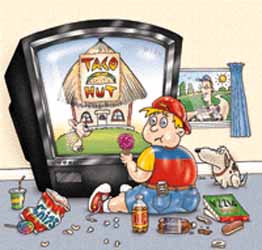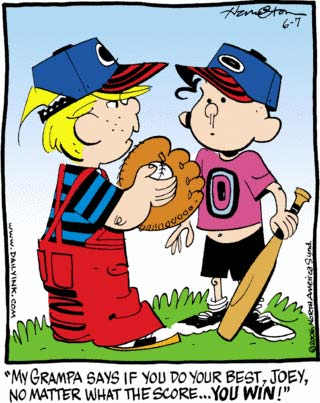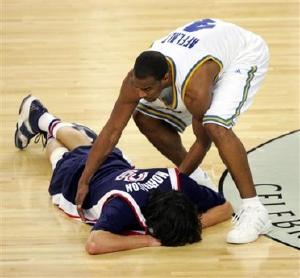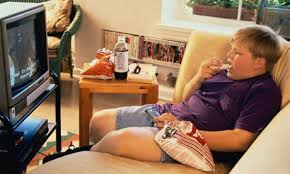
With that said let's get started.
Remember back in the day when you were a kid, you would go outside and play multiple games throughout the day. The day may start off with you and the fellows walking to your neighbor's house to ask and see if your best friend could come out but during that trip you wouldn't just walk on the sidewalk like normal kids, you would walk on the edge of the sidewalk to test your balance and coordination or play "Don't step on the crack cause it'll break your momma's back. Remember that was the game where you jumped the lines that separated the slobs of cement from each other on the sidewalk. Once everyone got outside you guys may warm up by playing a quick game of freeze tag. Then progress to playing some type of sport rather it was touch football, or basketball, or some type of organized play depending on the season that was in or televised on tv. Afterward, somebody would notion everyone going to get their bikes so you guys could ride up to the corner store to get some candy or something. And if you didn't have a bike, then you either rode standing on the back spokes of the guy who did have a bike, or you rode on the front handlebars as he used you as his personal Tom Tom navigation system. And at the end the day you guys may have orchestrated "the fastest kid in the neighborhood" race so to see who was the fastest kid in the neighborhood.
I had the opportunity this week to work with one of the local high schools where I currently reside. Before working with them, the coach and I met so that I had a clear vision on what goals she wanted for her team. I thought her response was going to be for me to come in and bring out all the toys and whistles that I have i.e. the agility ladder or some piece of agility/ speed equipment. But I was pleasantly surprised because that was not the case. What she said her number one goal that she wanted me to work with her girl's basketball team on was developing and improving upon their global skills and motor skills instead of concentrating on sports specific training.
Some reading this article may ask why???
And here is the answer. FOUNDATION.
Most parents, coaches, and trainers have narrow goals when designing a program for their youth athlete. However, like yesterday's post, the main goal for youth athletes should be for them to master the different motor skill components of coordination before they are introduced to more complex topics or sport specific drills and subjects. A global development of training approach not only ensures success in the future for the athlete but also prevents future injury.
The goal in early training for youth is to develop coordination through movement based stimuli so that they graduate later in their adolescence and post adolescence years to a more sports specific type of training that parents, coaches, and trainers are accustom to seeing and more familiar with their athlete participating in. First, let's define coordination. Most reading this post may think of coordination being a single ability or single skill; however, coordination is made up of several elements that work together. These elements are balance, rhythm, spatial orientation, and the ability to react to auditory and visual cues. An example of a coordination program would be a young athlete performing some type of spatial awareness exercise with no speed involved in the beginning and later progress to the same skill with the incorporation of a speed component combined with a change in the environment to make it more challenging for the athlete to master.
Research points out that coordination development is best introduced between the ages of 7-14 with the most crucial period of learning and training being in the period of 10-13. At the age of 16 usually is when the athlete has optimized the development of coordination. As a result, the drills planned should be age appropriate and structured so that it is challenging but yet fun for optimal results. Athletes who have a firm foundation with coordination development are far better athletes in the long term than athletes who are never exposed or are exposed to coordination/ global training later in their athletic career after these prescribed ages.
Why you might ask?

Because it is all about building a firm foundation to work upon. I like to use the analogy of a Jenga game, in which one piece missing could be detrimental in the end and cause the whole structure to fall. Thus young athletes should have a firm foundation so that they become a successful and healthy athlete in the long term.
Coordination development is a process of years of exposure to diverse yet versatile exercises and training. Coaches, parents, and trainers must understand that coordination training is a process and that each component builds upon the other. This statement alone should cause parents, coaches, and trainers to sit up and pay more close attention. Young athletes should have an opportunity to be exposed to different kinds of sports on a yearly basis so that they are introduced to a variety of coordination skills that they ordinarily would not be exposed to if they were to play the same sport year-round. Parents and coaches should not concentrate so much on sport-specific and specialized training for young athletes early on because it causes a faulty, weak foundation in the long term.
In addition, parents, coaches, and trainers should not wait to introduce global training in the beginning of an athlete's adolescent years because of the rapid changes that occur in their bodies during this period of time. The best time to introduce global training is during the pre-adolescence years when the athlete's nervous system is still highly plausible and their motor skill learning has not become fully developed permanently. Once the athlete masters the pre-adolescent stage, the next level to build upon is their adolescent years in which the main goal should be to refine those skills that were introduced in the pre-adolescent stage. Then and only then should the concentration be shifted to a more sports-specific or specialized type of environment for the athlete, which we will call the post-adolescence stage.
I must address the issue of genetics as it relates to global training. Less coordinated athletes will never exhibit the coordination of well-skilled athletes no matter how much global training they receive; however, improvement will be seen and achieved on a more personal level.

1. Start young – coordination improves as a result of learning and mastering new movements. Start young athletes off early with coordination-based exercises that challenge their abilities (within reason). The more coordination a young athlete has, the more ability he or she will display at any perspective sport.
2. Challenge young athletes on an individual and appropriate level – Some youngsters have good balance while others display good rhythm. The key to successful coaching is to undercover what elements of coordination each athlete requires and develop drills/exercises that most suitably target the weaknesses.
3. Change exercises frequently – young athletes learn quickly in most cases. Be sure to challenge them physically and intellectually with new exercises often.
Until then keep working hard. Tomorrow we will look at what sports every kid must play in order to be an overall stud on the field/ court/ or rink.
Personal Trainer in Charlotte, NC












































.jpg)


